5 Best Leg Workouts for Women After 50
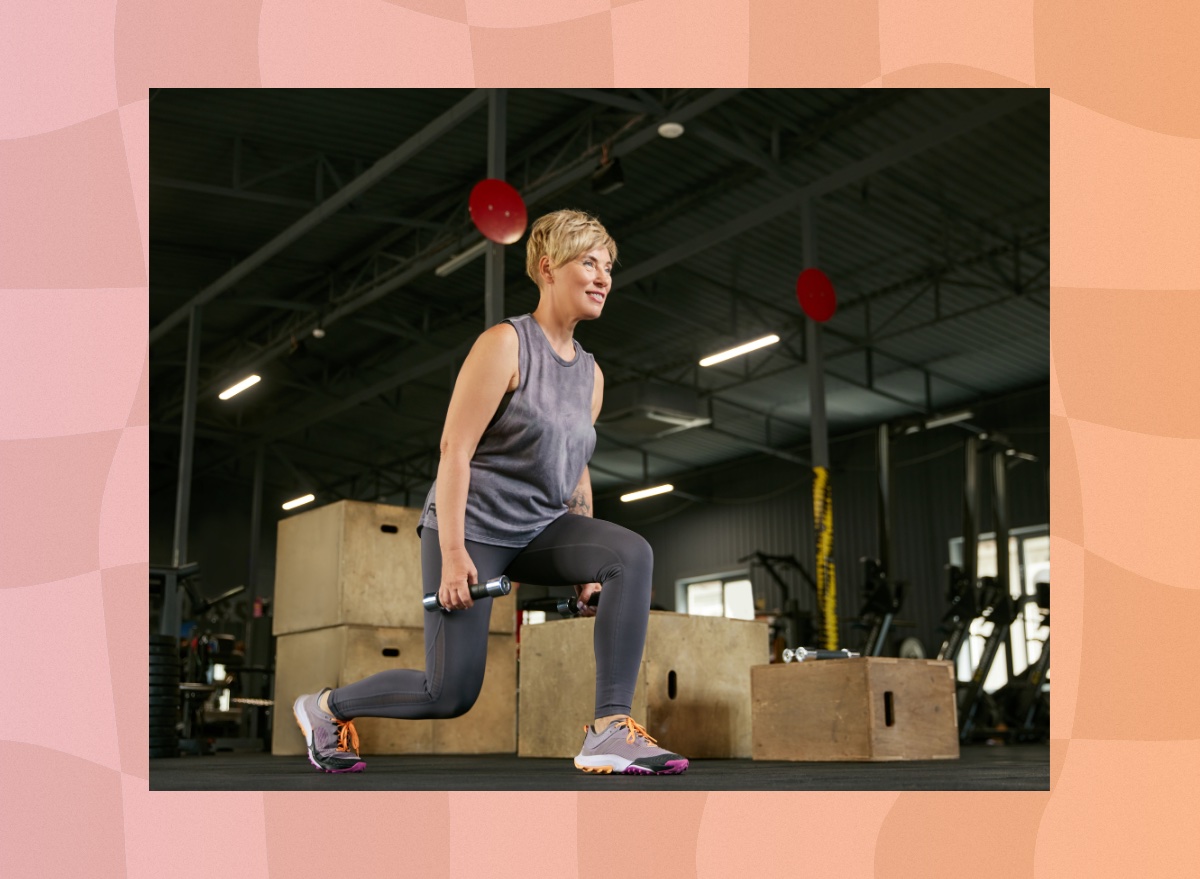
As a woman over 50, your fitness journey is unique, presenting both challenges and opportunities. The importance of maintaining and enhancing your physical health for overall well-being and independence becomes even more significant. This is where leg workouts come in. They're not just about mobility and strength; they are about empowering you to live life to the fullest, regardless of your age. In this article, I'll guide you through the five best leg workouts for women after 50.
These workouts are not just about fitness; they're about empowerment. They offer a range of goals and training styles, from building strength and muscle mass to improving endurance and promoting fat loss. Whether you're new to fitness or a seasoned enthusiast, these workouts provide accessible and effective strategies to support your health and fitness journey. Let's dive in and discover how these leg workouts can empower you to thrive and live life to the fullest at any age.
Workout #1: Strength
Maintaining strength is crucial regardless of age. It ensures resilience and optimal functionality in everyday activities. As you age, the importance of strength training grows. It helps preserve muscle mass, bone density, and overall health, enabling a higher quality of life and independence. So, let's prioritize strength training and reap its benefits.
1. Goblet Squats
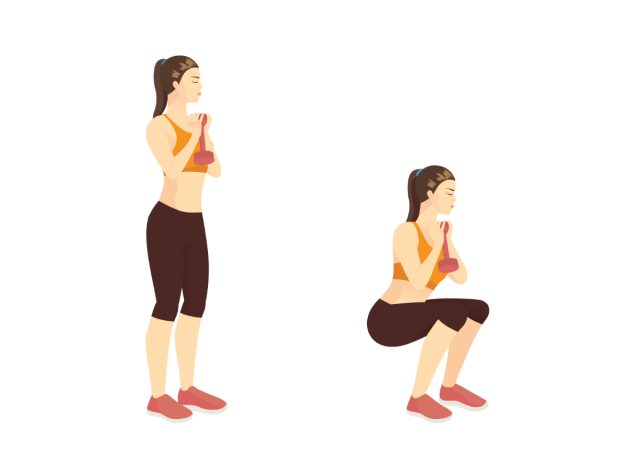
The goblet squat is not just a squat; it's a full-depth, muscle-engaging, core-stabilizing movement that enhances your mobility and flexibility. By challenging your core stability and activating a wide range of muscle groups, including those in your core, this exercise establishes a functional movement pattern that's essential for your everyday activities.
Stand with your feet hip-width apart, toes forward, and maintain an upright chest and engaged core. Hold a kettlebell or dumbbell in front of your chest to perform a goblet squat. Lower your hips and unlock your knees to lower into a squat. Lower to a desired depth, then push through your whole foot to return to the starting position.
Complete three sets of eight to 12 reps with 90 seconds of rest between sets.
2. Glute Bridges
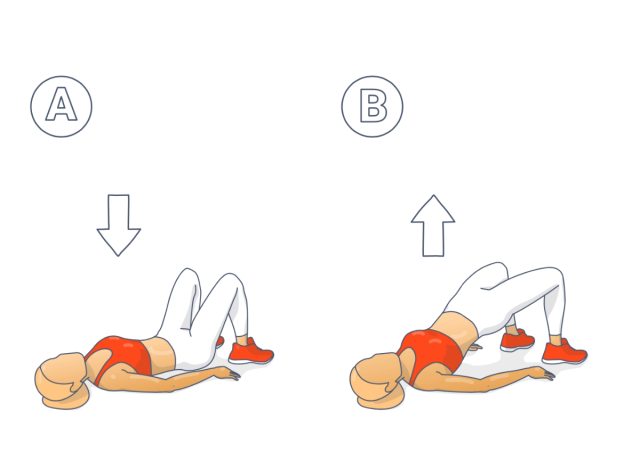
The classic glute bridge exercise is a versatile staple in any fitness routine. Whether you utilize solely your body weight, incorporate dumbbells, or add heavier resistance with a barbell, multiple approaches exist to execute this movement effectively.
Not only is this exercise an excellent entry point for beginners, but it also serves as a valuable activation exercise during warm-ups and daily maintenance routines. Strengthening the hips through exercises like the glute bridge is crucial as you age, as it helps maintain mobility, stability, and overall function, supporting a healthier and more active lifestyle throughout life.
To perform glute bridges, lie on your back with your knees bent and feet flat, hip-width apart. Squeeze your core, then push your hips up, squeezing your glutes at the top, maintaining a straight line from shoulders to knees. Slowly lower your hips back down, focusing on controlled movement. Keep your core engaged and avoid excessive arching when completing your reps. Coach tip: Pause at the top of each rep for two to three seconds to reinforce glute development.
Compete three sets of eight to 12 reps with 90 seconds of rest between sets.
3. Box Step-ups
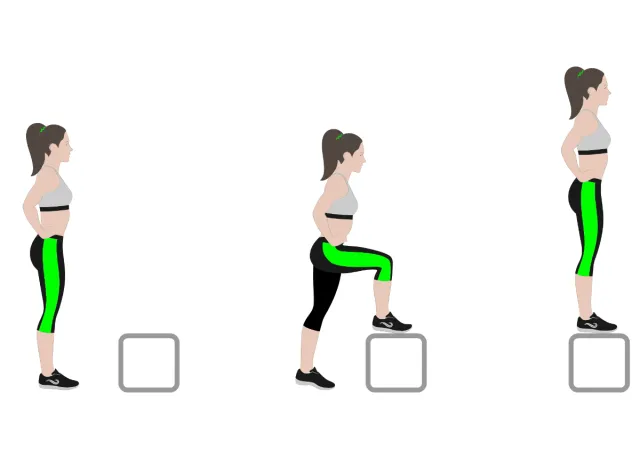
Box step-ups are excellent for honing single-leg strength and balance, with a focus on activating your quadriceps. When integrated into a superset, they provide a cardiovascular boost and foster muscular endurance and power. The unilateral aspect of step-ups targets any muscle imbalances, contributing to improved functional fitness and stability.
Start by standing before a sturdy box or bench with your feet hip-width apart. Step onto the box with your right foot, pressing through your right foot to push your body upward. Bring your left foot up to meet your right foot on top of the box, then lower yourself back down with control. Alternate legs for the desired number of repetitions, focusing on keeping your chest and core engaged throughout the movement. Adjust the box height to match your fitness level.
Perform three to four sets of six to 12 repetitions per side with 90 seconds of rest between supersets. To increase strength, use moderately to moderately heavy dumbbells.
Workout #2: Hypertrophy
Hypertrophy workouts are crucial in building and preserving lean muscle mass, contributing to a sculpted physique, enhanced metabolism, and improved joint stability. By engaging in hypertrophy-focused training, you shape your body and promote overall strength and resilience, laying a solid foundation for long-term health and fitness.
1. Dumbbell Romanian Deadlifts (RDL)
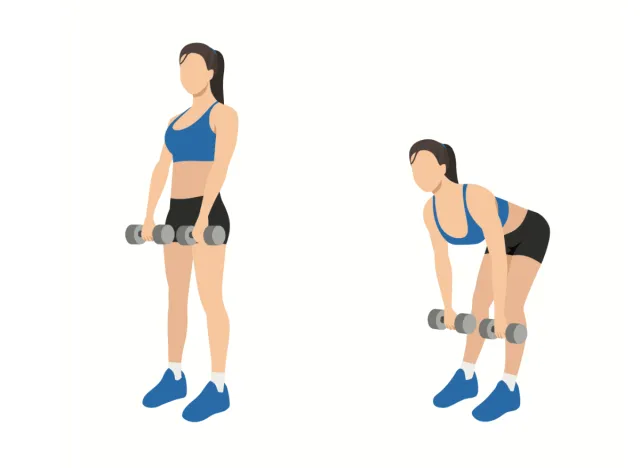
Dumbbell Romanian deadlifts (RDLs) are highly effective for hypertrophy. They primarily target the posterior chain, including the hamstrings and glutes. This exercise facilitates a deep stretch in the hamstrings, promoting muscle growth and activation enhancements in these key muscle groups.
Stand with your feet hip-width apart, holding dumbbells with an overhand grip in each hand. Keeping a slight bend in the knees and your core engaged, hinge at the hips while maintaining a straight back and lowering the dumbbells toward the ground. Drive your hips forward and squeeze your glutes to feel a stretch in the hamstrings before returning to the starting position. Maintain control and avoid rounding the spine.
2. Alternating Reverse Lunges
Alternating reverse lunges are highly effective for cultivating single-leg strength and size. With each lunge, you engage key muscles in the lower body, including the quadriceps, hamstrings, and glutes, promoting balanced development and power. Experimenting with varying weights and rack positions adds a layer of challenge, ensuring continuous progression and maximizing your workout's effectiveness.
Begin with your feet hip-width apart. Step back with your right foot, keeping the left knee above the ankle. Keep the right knee slightly above the ground. Push up with your left and right foot to return to the starting position, then repeat with the left foot stepping back. Alternate legs in a controlled manner, maintaining a smooth and steady rhythm.
Perform three sets of eight to 12 repetitions per side, ensuring each side receives equal attention. Rest for 60 seconds between sets to allow for adequate recovery. Integrate moderate dumbbells or kettlebells into your routine to optimize resistance and challenge your muscles effectively.
3. Seated Leg Extensions
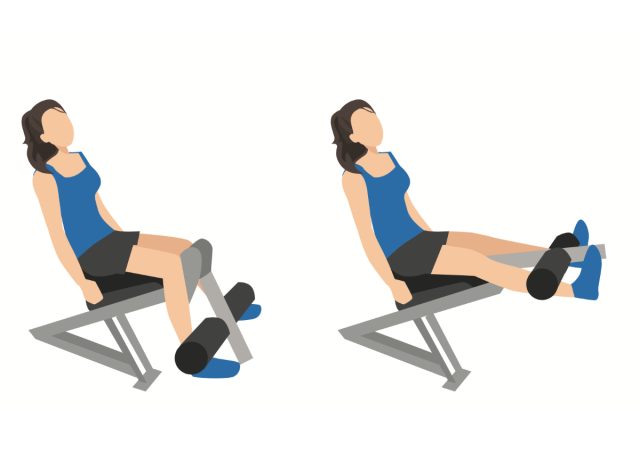
Isolation exercises, such as the seated leg extension, play a vital role in hypertrophy workouts by targeting specific muscle groups. While compound exercises recruit multiple muscles simultaneously, isolation exercises allow for focused activation of individual muscles, helping to address any imbalances and ensuring comprehensive muscle development. In hypertrophy-focused training, isolation exercises like the leg extension enable greater muscle engagement, increasing muscle fiber recruitment and growth.
It's pretty simple to knock out reps of leg extensions. Sit with your back against the backrest, grip the handles, and position your feet under the ankle pad. Extend your legs, squeeze the quadriceps, and lower the weight with controlled movements. Start light and increase gradually, maintaining proper form.
Complete two to three sets of 12 to 15 reps with 90 seconds of rest between sets.
Workout #3: Muscular Endurance
Muscular endurance-focused workouts are characterized by performing exercises for extended periods or with high repetitions, bolstering muscles' capacity to endure sustained effort. These routines enhance your lower body work capacity and elevate your heart rate, boosting metabolism and fostering cardiovascular health.
1. Heels-elevated Goblet Squats
Elevating your heels during a goblet squat amplifies quadriceps engagement. Additionally, the goblet hold with either a dumbbell or kettlebell demands significant core stability and strength, effectively engaging your abs.
Begin by placing a weight plate under your heels for elevation. Hold a dumbbell or kettlebell close to your chest in a goblet position. With feet shoulder-width apart, squat down by bending your knees and pushing your hips back, maintaining a straight back and keeping the heels grounded. Aim to lower until your thighs are parallel to the ground or slightly below. Push through your heels to return to the starting position, focusing on quadriceps engagement.
Complete three sets of 15 to 20 reps with 90 seconds of rest between sets.
2. Double Dumbbell Ski Swing
The two-dumbbell ski swing is an effective exercise for building muscular endurance in the posterior chain, which includes the muscles of the back, glutes, and hamstrings, along with the core and shoulders. By executing controlled swings with the dumbbells, you engage these muscle groups in a coordinated manner, gradually improving their endurance capacity. The repetitive nature of the movement challenges these muscles to maintain effort over extended periods, ultimately enhancing stamina and resilience in the posterior chain.
Start by holding a dumbbell in each hand between your legs with a slightly wider than hip-width stance. Next, hinge at the hips with a slight bend in the knees, then drive your hips forward and swing the dumbbells up in front of you explosively while engaging your core. Control the descent as you lower the dumbbells back down between your legs. Focus on generating power from the hips and maintaining stability throughout the movement.
Perform three sets of 15 to 20 reps with moderately light dumbbells. Rest for 90 seconds between sets.
Workout #4: Interval Workout
Interval workouts provide a highly efficient option for leg training, yielding significant results in minimal time while accommodating diverse fitness levels. This training effectively challenges cardiovascular endurance and muscular strength, fostering overall fitness and leg strength improvement through alternating high-intensity activity and recovery intervals. Its adaptable nature allows for personalized adjustments to suit individual fitness levels and objectives, making it a versatile and accessible choice for women aiming to enhance leg strength and overall health.
For this workout, aim to complete 10 to 20 rounds of 30 seconds of work followed by 30 seconds of rest. Alternate between kettlebell swings and pendulum lunges for each interval.
1. Kettlebell Swings
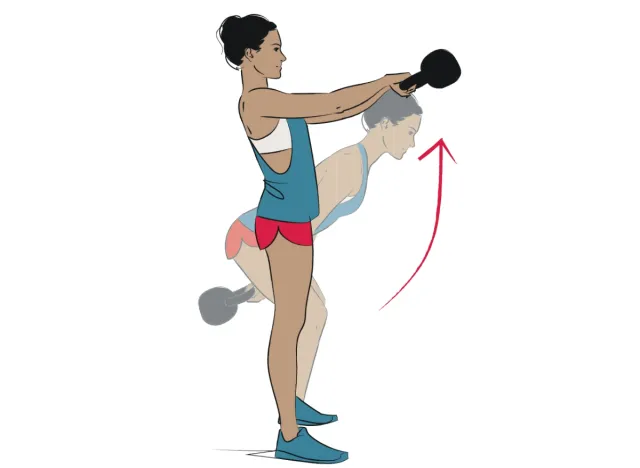
Kettlebell swings are an explosive exercise that powers up your posterior chain, developing lean muscle mass in your hamstrings, glutes, and lower back. They are a great addition to interval workouts.
Stand with feet shoulder-width apart, grasping a kettlebell while standing tall. Hinge at your hips, maintaining straight arms, then explosively drive your hips forward to swing the kettlebell to chest height, powered by momentum from your lower body. Return the kettlebell between your legs in the hinge position and repeat the movement.
2. Pendulum Lunges
Pendulum lunges are dynamic exercises that ignite your lower body and fire up your metabolism. Integrating aspects of both reverse and forward lunges, they provide a complete leg workout, engaging various muscle groups while also testing your stability and coordination.
Begin with your feet hip-width apart. Step back with your right foot, keeping the left knee above the ankle. Keep the right knee slightly above the ground. Next, push off the ground with your right foot and bring the right leg through into a forward lunge without touching the ground. Continue the pendulum-like motion with the right leg for the prescribed reps or time, and then repeat with the left leg.
Workout #5: AMRAP (As Many Rounds As Possible)
AMRAPs (As Many Rounds As Possible) are a comprehensive fitness solution that targets strength, muscle growth, endurance, and calorie burn all in one session. Essentially, they're a versatile all-in-one workout option. I often recommend AMRAP workouts for those tight on time or seeking to inject some excitement into their routine. Whether you need to fit in a quick session or want to add a touch of variety to your workout, AMRAPs deliver results efficiently and effectively.
For this workout, perform the specified number of repetitions for each exercise, transitioning smoothly from one to the next without resting unless necessary. Set a timer for 10 to 15 minutes. You may repeat the AMRAP if desired, but take a 3 to 5-minute break in between.
1. Squat to Lunge
The squat-to-lunge blends the strength-building benefits of squats, whether goblet, dumbbell, kettlebell, or even barbell variations, with the unilateral advantages of lunges. By engaging in both lower-body exercises, this compound movement intensifies your metabolism and enhances weight-loss-oriented workouts effectively. Mix up your equipment and alternate between back and front squats each week for a fun and more challenging workout!
Begin by standing with your feet hip-width apart. Lower into a squat by bending knees and pushing hips back, maintaining a straight back and upright chest. Return to the starting position and step forward with one foot into a lunge position. Push back to standing by pressing through your front foot. Alternate legs and repeat.
Complete 10 reps.
2. Kettlebell High Pull
The kettlebell high pull blends an explosive leg drive with a strong upward pull from the arms and upper back, resulting in a dynamic, powerful, and full-body engaging exercise.
Start by standing with your feet shoulder-width apart and placing a kettlebell between your feet. Bend your knees slightly and hinge at your hips to grip the kettlebell. With explosive power, push with your legs while simultaneously pulling the kettlebell toward your chest. Drive your elbows upward and outward as you aim to bring the kettlebell to chest level. Briefly pause at the top of the movement, squeezing your shoulder blades together and maintaining core tightness. Lower the kettlebell back down under control to the starting position.
Complete 10 reps.
3. Sled Pushes
Sled pushes are one of the best exercises to feature in leg workouts for women over 50, as they offer a wide range of benefits. These include boosting metabolism, building overall body strength, and supporting weight-loss maintenance. Sled pushes activate multiple muscle groups simultaneously and stimulate a significant metabolic response, leading to heightened calorie expenditure during and after the workout.
This exercise targets critical areas such as the lower body, core, back, and shoulders, fostering comprehensive strength development. Additionally, the high-intensity nature of sled pushes elevates heart rate and promotes fat loss, making it a valuable addition to any weight-loss regimen.
To perform sled pushes, load the sled with an appropriate weight and stand behind it with your feet shoulder-width apart. Grip the handles, brace your core, and push the sled forward by driving through your legs. Maintain a steady pace, keeping your back straight and shoulders engaged. Push the sled across the desired distance, then rest and repeat. Start with lighter weights and focus on proper form to maximize effectiveness and minimize the risk of injury.
Push the sled for 15 to 30 yards. Adjust the sled's weight based on your goals; opt for a lighter sled for a sprint-style interval with shorter distances or increase the weight for a more strength-focused workout.









